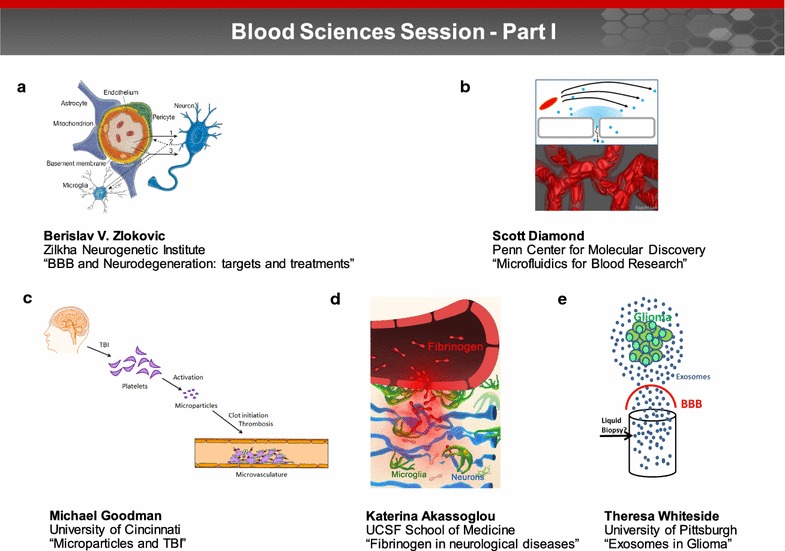Fig. 1.

Blood sciences session—Part I. Part I of the blood sciences session focused on the physiology of the blood and neurovascular unit, biofluid-based molecular markers, and extracellular vesicles associated with brain injury and disease progression. The presentations explored how these entities are transported between brain and blood and can be employed to evaluate injury states or deliver therapeutics. a Endothelial cells, pericytes, neurons and glia constitute an interconnected functional cellular network, collectively referred to as the neurovascular unit. Dr. Berislav Zlokovic discussed how defects in blood vessels and the neurovascular unit can lead to BBB breakdown and neurodegeneration (image reprinted with permission from [107]). b The Diamond laboratory uses a combination of microfluidics, patient-specific high throughput phenotyping, and systems biology to quantify blood function in the hemodynamic and pharmacological context of thrombosis and hemostasis. Image courtesy of Dr. Diamond. c Dr. Michael Goodman discussed how traumatic brain injury (TBI) induces systemic alterations in the aggregation of platelets aggregation and as well as the generation and function of microparticles (MP). Image courtesy of Dr. Goodman. d Dr. Katerina Akassoglou identified fibrinogen as a novel molecular link between blood–brain barrier disruption, activation of CNS innate immunity, and neurodegeneration. Image courtesy of Dr. Akassoglou. e Dr. Theresa Whiteside noted that genetic and molecular cargo of exosomes found in plasma of glioma patients resembles that of tumor cells and suggested that tumor derived exosomes hold promise as biomarkers of prognosis, as a source of liquid biopsy. Image courtesy of Dr. Whiteside
